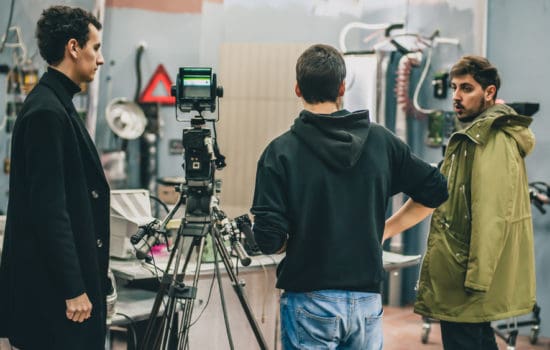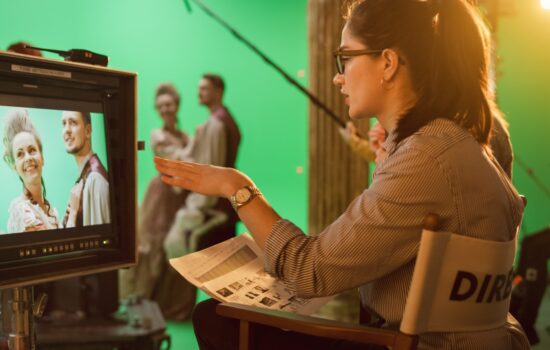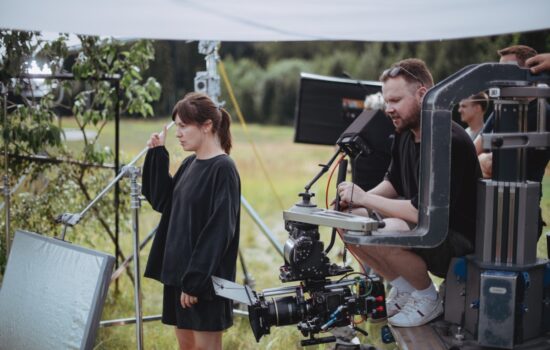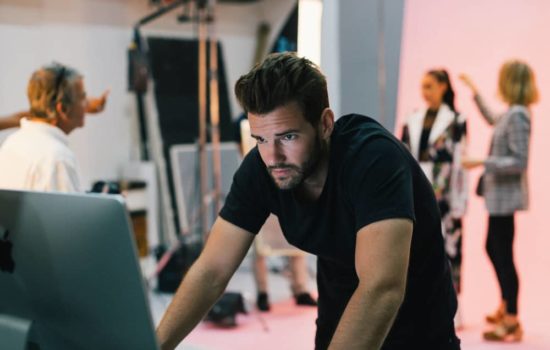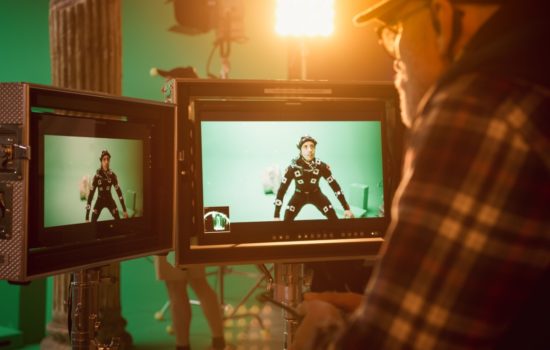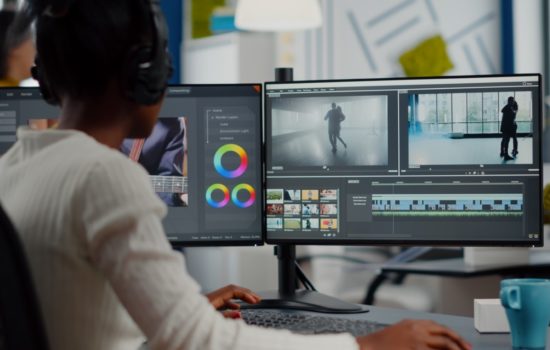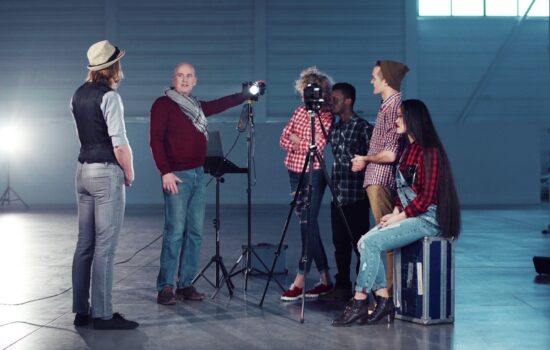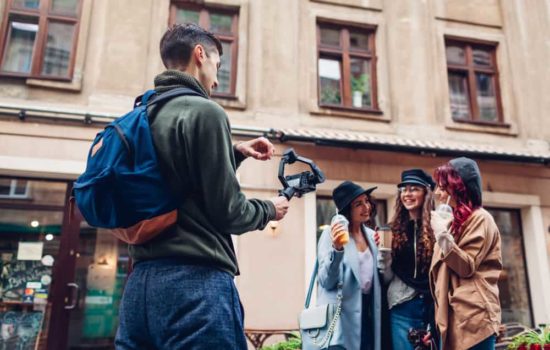Key Grip
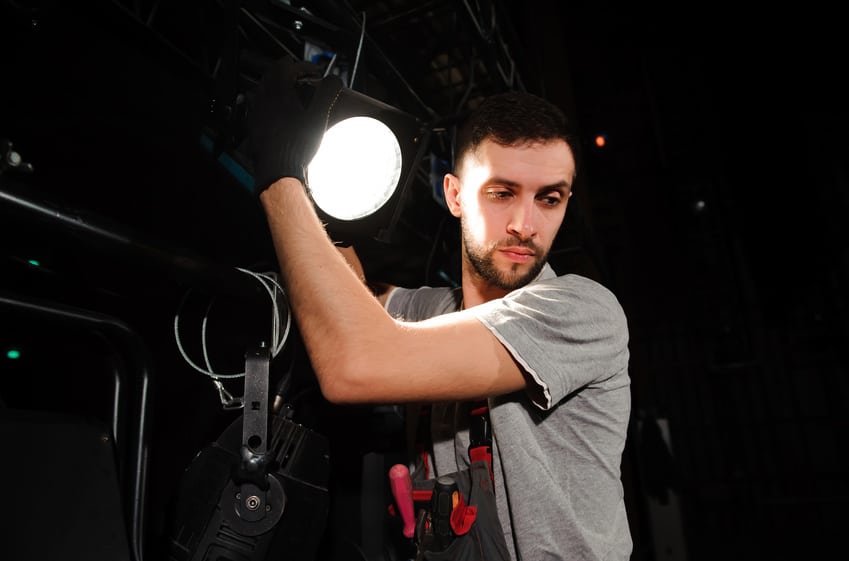
How To Become a Key Grip
People also ask
- Why is it called a Key Grip?
- What is a Key Grip salary?
- What does a Grip and Key Grip do?
- What types of tools and equipment are essential for a key grip?
- How does the role of a key grip differ on various types of productions, such as feature films, television shows, or commercials?
- What are the biggest challenges a key grip faces?
Career Description
The Key Grip is the head of the Grip Department. They handle all support gear including camera support, rigging, and lighting. While the Lighting Department will set the lights, it is the Grips who cut and shape light for a cinematic quality.
Greg Flores, a union Key Grip for over twenty years says, “I start with the camera when I get to work. Once the camera is set up with its support, which usually involves putting it on sticks or a dolly, then we’ll watch the scene.
After everyone knows what is going to happen — where the frame lines will be — then the Actors return to their trailers and we shape the light using Stand-Ins. After the lighting is set, the Actors come back for final touches. After that, the first shot is taken. This process is repeated for every setup until all of the shots for the day have been achieved.”
Beyond the creative work on set, a Key Grip also manages their department. They review all equipment orders and crew hires.
Why is it called a Key Grip?
Before the jobs on a production set became specialized, the people working on it who were tasked with setting up, moving, and breaking down the equipment would have with them a bag – often referred to as a grip – filled with the tools to do so.
Once formal roles were put in place for productions, the term grip stuck with the individuals in charge of the rigging for a film. The Key Grip is the person in charge of that department.
What types of tools and equipment are essential for a key grip?
A key grip needs to be the master of a variety of tools and equipment, as their job is an indispensable element in executing a smooth-running production of many moving parts. Since key grips are essentially the backbone of the camera department, they need to be familiar with all aspects of camera rigging, support, and movement.
- Camera Dolly
- C-Stands, Clamps, And Grip Heads
- Stabilizers And Camera Mounts
Moving cameras are a key component to the majority of motion pictures. A camera dolly allows for controlled and smooth camera movements, which enhance emotion and energy to individual shots. There are several types of dollies in use today, starting with traditional track dollies all the way up the chain, to state-of-the-art more versatile systems. Jib arms and sliders are further components a dolly offers that allow for more dynamic camera angles.
For more on the mechanics of dollies, check out this video.
Technical equipment such as C-stands, clamps, and grip heads play important roles in positioning and securing flags, lights, and other production accessories. Mastery of these tools allows the key grip to control and manipulate the on-set lighting and provide the director and director of photography with the image they’re looking to achieve.
Ever-present in modern filmmaking, stabilizers and camera mounts such as steadicams and gimbals enable key grips to achieve steady and fluid shots, regardless of the environment or shooting conditions.
Salary
The mid-range salary for a Key Grip is approximately $59,000. The salary range for Key Grips runs from $41,000 to $131,000.
Many Grips start off non-union, earning less than their union peers while they build their careers. Union members receive a set pay scale based on each project and can expect overtime if days run over schedule.
What is a Key Grip salary?
It’s extremely challenging to provide a singular salary figure for a Key Grip on account of the many factors that impact what a person in that role can make.
For instance, how veteran is the Key Grip? What types of productions are they working on? What is the budget for a given production? And perhaps most important, is the Key Grip a union member?
The answers to all of the above questions will impact a Key Grip’s overall salary. With that being said, the annual range for a Key Grip can be anywhere from $41,000 to $131,000.
Hey, what do you think about trying our new Film Career HelperFilm Career Helper really quick? It’s totally free and could help get your career moving fast! Give it a try. It’s totally free and you have nothing to lose.
Career Outlook
Working as a Key Grip is a freelance position. Flores says, “The good thing about the film industry is you get to pick your own hours. They’ll offer you a commercial for three days or you can choose to do a television show for six months. Since it’s up to you, you’ve got to balance family life with work.
“It’s a must. Otherwise, you’ll lose those relationships. Jobs will come and go, especially if you’re a hard worker, but if you don’t take time to plan vacations or [if you] leave for extended periods to work it can be isolating.”
Flores also says, “I never leave a job once I’ve agreed to take it. When working in the union, most jobs pay the same and while it seems like it may be better to leave a job for a bigger one, you’re burning a connection with that Director of Photography. For an example, I did the movie Dope. I got a job offer halfway through but I stayed and it worked out because that Cinematographer went on to do the film Cake. I got brought on to that.”
Being a successful freelancer means forging relationships both in the workplace and outside of it while knowing personal limits.
Depending on the job, the schedule will vary. Usually, commercials will last a couple of days while a feature can be months long. The days are typically five days a week, ten to twelve hours a day, whenever it works best for the scene. The Key Grip collaborates with the Cinematographer, Gaffer and the Grip Department. They interact with almost every other department on set, but usually, the creative work is done with the Cinematographer.
What does a Grip and Key Grip do?
All Grips on a set are tasked with the setup, moving, and breaking down of the rigging on a set for cameras and other equipment. The Key Grip is the person who heads this particular department.
How does the role of a key grip differ on various types of productions, such as feature films, television shows, or commercials?
The role of a key grip often needs to adapt to the unique, individual demands of the types of production they’re working in. Whether it’s feature films, television shows or commercials, the main responsibilities of the key grip will remain consistent, but the specifics of each format can necessitate distinct approaches and skill sets.
- Feature Films
- Television Shows
- Commercials
Movies are typically shot over a period of several months, but they can also run even longer. Key grips need to facilitate executing the director’s vision during the duration of the production, regardless of how long it runs. This means maintaining a consistency across multiple takes and scenes (remember, movies are typically shot out of order and it’s vital to maintain a unity in tone and content). It also requires an ongoing collaborative effort with all of the other production departments to ensure this maintained quality of work.
Television shows are produced within tight timeframes, so the key grip’s responsibilities are more relegated to getting the work done at a faster pace than they would on a television show. Planning and executing complex setups while maintaining an adaptability to an ever-changing environment are essential factors to working successfully as a key grip on a television series. Television also requires a level of consistency across multiple episodes (and seasons), so it’s vital that key grips work to keep to a regularity in their work.
Key grips working on commercials are often required to create memorable visuals with limited resources and time. Commercials are shot quickly (as they themselves are produced as shorter-duration products), so key grips need to combine technical know-how while keeping a creative mindset to effectively service the commercial production medium.
Career Path
Since the Key Grip is the head of the department, they need to know every position within it to be an effective manager.
Flores advises, “Start as a Grip and learn the equipment. From there a person can move on to becoming a Dolly Grip and then Best Boy Grip. The Best Boy Grip takes care of a lot of the behind-the-scenes work. They handle orders, learn what things cost, and hire people under the supervision of the Key Grip. It can also be good for a person to get experience as a Rigging Grip.”
The rigging team works a day or two ahead of the production team to help set up lights and equipment so people can move faster on set. Through experiencing each of these jobs, a person will become a much better Key Grip.
There is a lot of creativity as a Key Grip but what allows that creativity to happen is hands-on experience: witnessing how another Key Grip builds a specialized rig, how they deal with the sun and what gear they order. Anybody can order a techno crane but it takes experience to know when it will be necessary, not only artistically but also economically.
A lot of people do Key Grip on small films and then promote themselves to that job title. When they catch a break and get onto a large film or television show, those people find themselves in hot water. Large productions use very expensive equipment that has the potential to hurt people if it’s used incorrectly.
Having the proper experience and due diligence in regards to learning will not only help someone do a better job on set but keep others safe. It’s important for someone to be honest with themselves about their skills.
Working as a Grip is the best entry-level position in the field to grab. It gives practical experience that will prove invaluable for someone who wants to become a Key Grip. Flores says, “There are a lot of people in this field who have a tough mind and no patience.
I want to be the opposite, to treat my crew with respect and patience so it becomes the work culture, always saying ‘please’ and ‘thank you’ whenever I make a request on set. It’ll make people do anything for you.”
Getting to work with someone like Flores will teach an incoming Grip how to interact with others when they get a chance to be a leader.
When it comes to landing the job, Flores recommends, “It’s important for people to meet other Grips and surround themselves with the things they want to do. If they want to do dolly gripping then they should hang out with the Dolly Grips or go work at JL Fischer. If they don’t know anybody it’s up to them to take their shot and get to know people, to create their own opportunities to grow and learn.”
Once a person develops this tenacity and can get steady work, they’ll build a network that will help them get promoted over the years. For example, when a Best Boy Grip gets their break to become a Key Grip they will often take a Grip they’ve worked with to become their Best Boy. Career advancement is a relationships game where prior experience counts.
- Find a Grip and shadow them.
- Review grip-related websites.
- Work in a grip and electric rental house.
- Buy all the essential hand tools that will be needed on set.
What are the biggest challenges a key grip faces?
As with any profession on a movie set, key grips face their own, unique set of challenges that can range across the board from physical stamina, technical skill and on-your-feet adaptability. These include…
- Tight Schedules
- Physical Demands
- Varying Locations
- Budget Constraints
- Safety Issues
No matter the size of the production, schedules will always be tight. Budgets are on the line and milestones always need to be reached, sooner rather than later. Quick turnaround time is an ongoing factor and key grips need to be on their toes to meet these demands.
A key grip is one of the most (if not THE most) physically demanding positions on a film set. Often, lifting heavy equipment, setting up rigs, and working/standing on your feet for long hours are a daily requirement. These factors also need to be carried out against any type of weather condition or physically-confined space.
As mentioned, weather conditions and tight spaces are part of the territory for a key grip. Whether the temperature is freezing cold, boiling hot, crowded, or desolate, a key grip needs to be adaptable and ready to operate at the top of their game in any environment or setting.
Movies are always made with limited budgets. It’s how well the production crew works within those financial confines that defines how smoothly (or not) the production will go. Key grips need to be strategic with the other creative departments when it comes to discerning how sequences and moments will be accomplished, while satisfying them both creatively and on-budget.
Arguably the most crucial factor on this list is the safety and well-being of every cast and crew member on a production. Key grips need to prioritize safety protocols, ensuring the well-being of everyone around them. No set should ever be dangerous and managing safety in dynamic and fast-paced environments requires constant planning and carefulness.
Experience & Skills
Many people don’t understand how creative a Key Grip is. Flores says, “You really need to have a good vision for things. Everything that will be done, from lighting setups to how the final image will look needs to be planned out by the Key Grip beforehand. They need to be able to picture things and be visual.
“It’s the only way to truly understand lighting and how it works to best serve the project. That also doesn’t just mean lights but shadows, as well. It isn’t always adding light but sometimes providing negative fill. Beyond that, basic skills like working with power tools are necessary.”
The Key Grip is an essential collaborator in developing the cinematic vision. They work hand-in-hand with the Gaffer and Cinematographer to create the final image. While the Grip Department is usually known as a very physical job that involves moving lots of heavy gear and stands, it is extremely creative at the top.
“In my experience, with having been doing this work for over twenty-one years it all comes down to your attitude,” says Flores. He elaborates, “A Grip isn’t alone; they are a team player. If they don’t collaborate then the job doesn’t flow.” Much of the time the Grip Department is setting up very complex lighting at a rapid pace. It takes everyone communicating effectively, helping each other to get the gear that’s needed to be effective.
Then at the end of the day, all that gear needs to be put away. If someone is a constant complainer, even if they are a hard worker, people just won’t want to be around them. It drags down everyone else.
When it comes time for the Best Boy Grip or Key Grip to hire they won’t hire that person. Additionally, if a Key Grip has a bad attitude it’ll destroy the morale of their crew. There doesn’t need to be yelling on set, only clear communication and respect.
Education & Training
Flores says, “The best training you can get is to understand the fundamentals of gripping. The only way to get that is to work as a Grip.” But what if someone has never been on set before?
One solution Flores mentions is to “try to intern for someone or work at a rental house. Rental house work teaches a person everything about the equipment and what gear is out there. Once someone knows what something is then they can use it. That is really the function of a Grip. It’s an entry-level position. They just need to know what the equipment is and how to use it. From there they can get on set and watch more experienced people work.”
Some people will attend film school to try and gain this knowledge but that can lead to debt. They’re also just working with students, which isn’t bad, but doesn’t provide the same learning opportunity that comes from watching a veteran work. If someone can get experience as a Grip then they’ve taken their first step to watching a Key Grip work, which will provide a solid education.
Additional Resources
One of the best online resources is run by Greg Flores and called GripSupport.com. Flores says, “You can find any company, equipment and YouTube video on our site. There are instructions on how to do any grip rig, like motorcycle rigs and car mounts. We also have articles like how the C-stand was invented and how grips originated. The blog is good to check out.”
Outside of Flores’ website, there are also videos on NoFilmSchool.com and Vimeo. The Grip Union offers classes to its members, usually about twelve or thirteen courses, but these are only for working professionals.
He also recommends Grip Tips on YouTube. With this collection of resources, people who aspire to work in the Grip Department should be able to find information on everything they’d need.
FAQ
What is the single biggest suggestion you would give to someone wanting to get into this career?
“People forget that there are always multiple ways of learning to do something. Working on a film set is an opportunity to constantly be learning, even when someone has been a veteran. Whether they’ve worked in the Grip Department for a long time or are just starting out it’s important for a person to be proactive in their career.
“If they want to learn techno crane then talk to an operator and learn it. Get to understand how it works and its applications. This methodology can be expanded to any sub-department under the Grip heading. What is important is to keep growing and learning. It’s also the best way to maintain job security. The more things a person can do, the more gigs they can land.”
What’s the #1 mistake people make when trying to get into this career?
“The biggest mistake people make is saying that they already know how to do something. People never know when they’re going to be surprised by knowledge. Even if it is true and there’s nothing new to learn, it shuts down the relationship. The filmmaking process itself is all about collaborating and learning so having a bad attitude and pushing people away is antithetical to making a good film.
“It’s good to always ask questions in a polite manner and never be arrogant. This may seem simple, but it’s surprising how many people can’t get it and become their own worst enemy.”
What is the question people should ask about this career but rarely do?
“Is there a way to make more money in the grip industry besides just working?
“The best way to be financially successful in the grip industry is to own gear. It can be rented to production, giving the owner additional revenue while they’re working the job. It can take hard work. Anyone interested needs to learn how to manage a grip truck and repair equipment.
“With more experience working on set, equipment owners will know what gear to buy. As more revenue comes in then more gear can be purchased, resulting in the ability to do box truck rentals. The extra effort is worth it in the long run because having more money coming in allows the owner to be more selective about the jobs they’ll take within the Grip Department, which can help propel their career.”
If you could describe in one word what makes you successful, what would it be?
“Inspired.”
Sources

Greg Flores
Key Grip Greg Flores has worked in the film industry for over twenty years in the Grip Department. He has been the Key Grip on notable projects such as Dope, Cake, Wallenda, The Real O’Neals and music videos for artists like Neko Case and Big Black Delta. He’s based in Los Angeles and is the founder of GripSupport.com and the Grip Rigs online community.
Flores is a film industry influencer with Intellifluence. You can hear more about his career as a Key Grip through the Groovy Guide to Careers in Filmmakingpodcast.
References
- 1THR Staff. "Hollywood's Salary Report 2017: Movie Stars to Makeup Artists to Boom Operators". Hollywood Reporter. published: 28 September 2017. retrieved on: 8 April 2020
